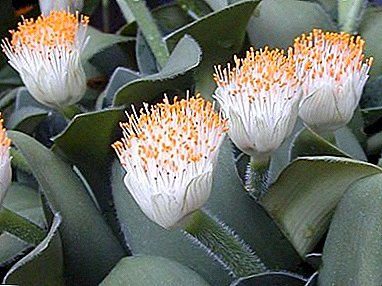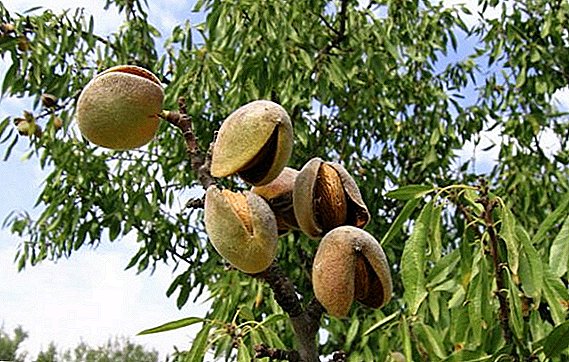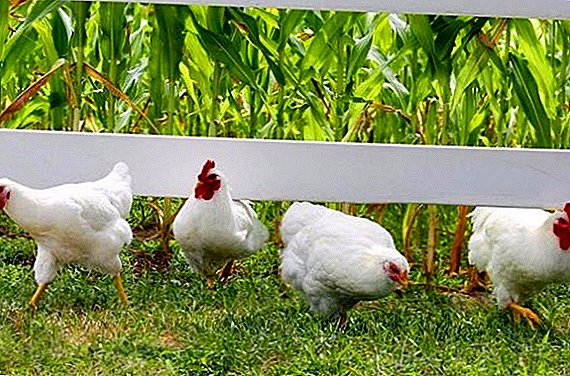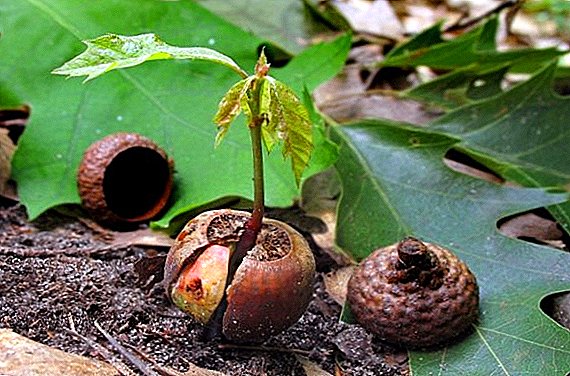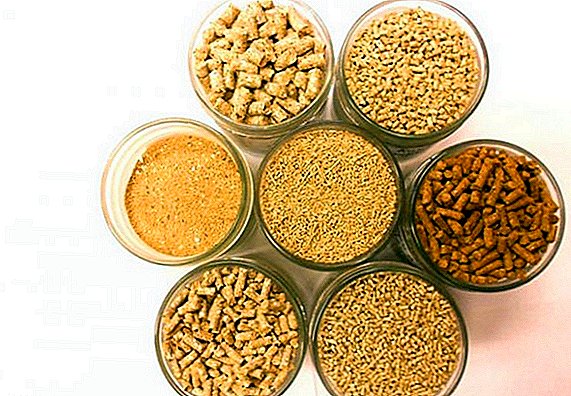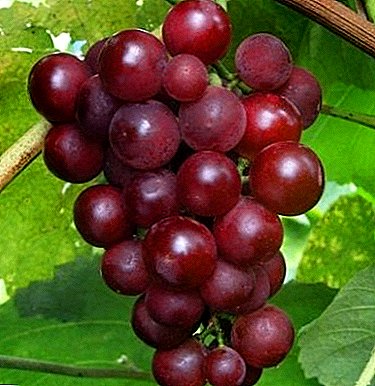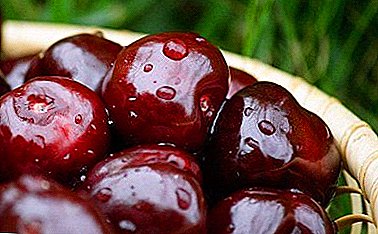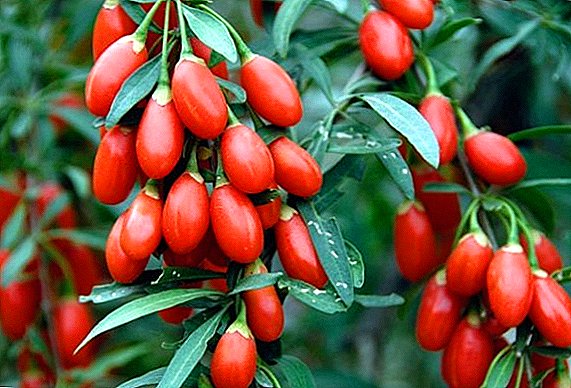 Goji berries - a popular superfood. Someone considers them as a means for losing weight, someone as a source of health and longevity. In any case, these small red berries - an expensive treat. The good news is that this magic tool can be grown on your own in the garden.
Goji berries - a popular superfood. Someone considers them as a means for losing weight, someone as a source of health and longevity. In any case, these small red berries - an expensive treat. The good news is that this magic tool can be grown on your own in the garden.
In the article we will look at what goji berries are, the features of their self-cultivation and care, which is required for this.
Goji berry: description and species
Goji berries appear on a tree shrub (with proper care can be a height of 3.5 m and above) Chinese tree truss or common wolfberry.

Did you know? The second popular name is Tibetan barberry.. Apparently, this is a mistake, a wrong translation of the scientific name - Lycium barbarum. In fact, it translates as "berber berry", and not as "barberry". The name Tibetan barberry is popular in Russia. Goji is a Chinese word. And the British call in their own way - the Duke of Argyll's tea tree (Duke of Argyll's teatree), in honor of a Scottish duke.If the Chinese plant species in our latitudes is not very common, then wolfberry is common. quite accessible and well rooted and growing. Goji plant is a deciduous shrub with a spreading crown. The leaves are oval, fleshy, small, located along the entire length of thin branches. The roots are powerful and deep, give a lot of shoots.
In addition to useful berries, the plant is also beautifully decorative. The shrub blooms with lilac or purple-pink flowers. Flowering begins in May and lasts until September.
For successful cultivation is important to choose the right variety of goji berries.
Fruits in the third year. Fruits - bright red oblong berries. Harvest can be collected all summer, but the most valuable berries collected in August.
Is independent cultivation possible?
Dereza vulgaris, planting and care is considered in the article, it is well grown in household plots and even in room conditions. Shrub unpretentious, frost resistant. It can be used as a hedge both around the perimeter and inside the site.
You can grow shrubs as seeds and cuttings. Seeds can be extracted from soaked dry berries. Cuttings can be obtained from an adult plant.
Growth conditions
Shrub worm does not require special care and attention. But still when planting plants should take into account some points.
Location selection
Dereza is a fast-growing plant with strong roots. Plant it as a hedge or on empty plots.
Important! Be careful when disembarking at the site. Goji can destroy other plants.The shrub will grow well in a small shade and in the sun. Resistant to urban conditions. You can even grow at home, but requires special conditions when wintering at home.

Soil requirements
Because of its durability, it does not impose any particular requirements on the soil. It grows well on neutral and alkaline soils. On sour develops a little worse.
Does not like woods stagnant water. So try to plant a bush in places with stony soil.
At your summer cottage, you can also grow other fruit bushes: raspberries, physalis, dogrose, sea buckthorn, black and red currants, honeysuckle, actinidia, blueberries, blueberries.
How to plant goji berry, reproduction of a useful plant
As already mentioned, there is two ways of breeding this plant:
- seeds;
- cuttings.
From seed
Seeds can be obtained from dried berries. To do this, soak the berries and wait for them to soften. Now the seeds can be easily removed. For better germination, soak the seeds in the seed growth stimulator solution, after which they are ready for sowing. Seeding is carried out in a container filled with a mixture of peat and ordinary soil (ratio of approximately 2: 1). Sowing depth - 2-3 mm.
To increase the humidity in the tank, cover it with a film and put it in a dark warm place. After the appearance of the first shoots, bring the container to light. Keep away from drafts and hypothermia. The treatment of young plants is carried out with a spray gun in order not to damage the growth. After a week you can remove the film.
After the appearance of 3-4 leaves of the plant can be subjected to picking and planted in individual pots. The receptacle must be deep. Goji roots develop quickly and grow down, not in breadth. When transplanting, hook the seedling as low as possible and plant it together with the earth clod.
Dump in open ground in early summer or spring, after the termination of frosts.
Seeds and cuttings also multiply: gooseberries, heather, honeysuckle honeysuckle, petunia, magnolia, mountain ash red, chokeberry, yoshta.
Cuttings
Planting seedlings wench produce spring. In the fall, you can carry out planting in warm regions.
Prepare pits with a depth and width of about half a meter, where in two weeks you will plant cuttings. The bottom of the pit is filled with drainage (stones, sand), a mixture of soil and compost, and fertilizers are added - superphosphate, potassium, ash. Put the seedling so that the root of the neck was at ground level. Fall asleep and watered. Pristvolny circle better to mulch. Tie a young bush to a support or immediately install a trellis.
Important! Place seedlings at least 2 meters away.Small seedlings of goji berries, grown independently, are planted in holes 20 x 20 cm, filled with earth and humus, this method of planting will provide good care for them.

Basic rules of care
Young goji plants require attention in the first year of growth.
Watering
Bush wolf not bad withstand drought. Watering in the first year is required no more than 2 times a week. In the future, it is possible and less, depending on the aridity of the weather.
Top dressing and fertilizer
Feed should be only young plants. As fertilizer, you can use humus, superphosphate. In the future, the shrub needs no feeding. Goji feels good even on poor soils.
Pruning shrubs
Goji bush is growing very actively and aggressively. Therefore, pruning is an important operation. Shrub tolerates pruning. New shoots grow back quickly. Therefore, the trees are well formed and will be useful in ornamental gardening. You can cut both manually and mechanical brush cutters.
A little bit about the beneficial properties of berries
Goji berries are rich in vitamins and microelements. Often they are called the cure for a thousand diseases. Useful for:
- anemia;
- diabetes;
- insomnia
Did you know? Very useful for losing weight. Included in all Chinese diets. They have almost no carbohydrates and starch. They burn fat and help control appetite. Strengthen teeth and bones, contribute to the "delivery of calcium" in the bone tissue. Stimulate the development of muscle mass. Bodybuilding trainers recommend them to their athletes.Berries contain a large amount of protein. Have tonic properties. Proved anti-aging properties of goji.
But in any case, goji is not a "magic pill." With all their benefits, the berries are only an aid and will not help themselves.


